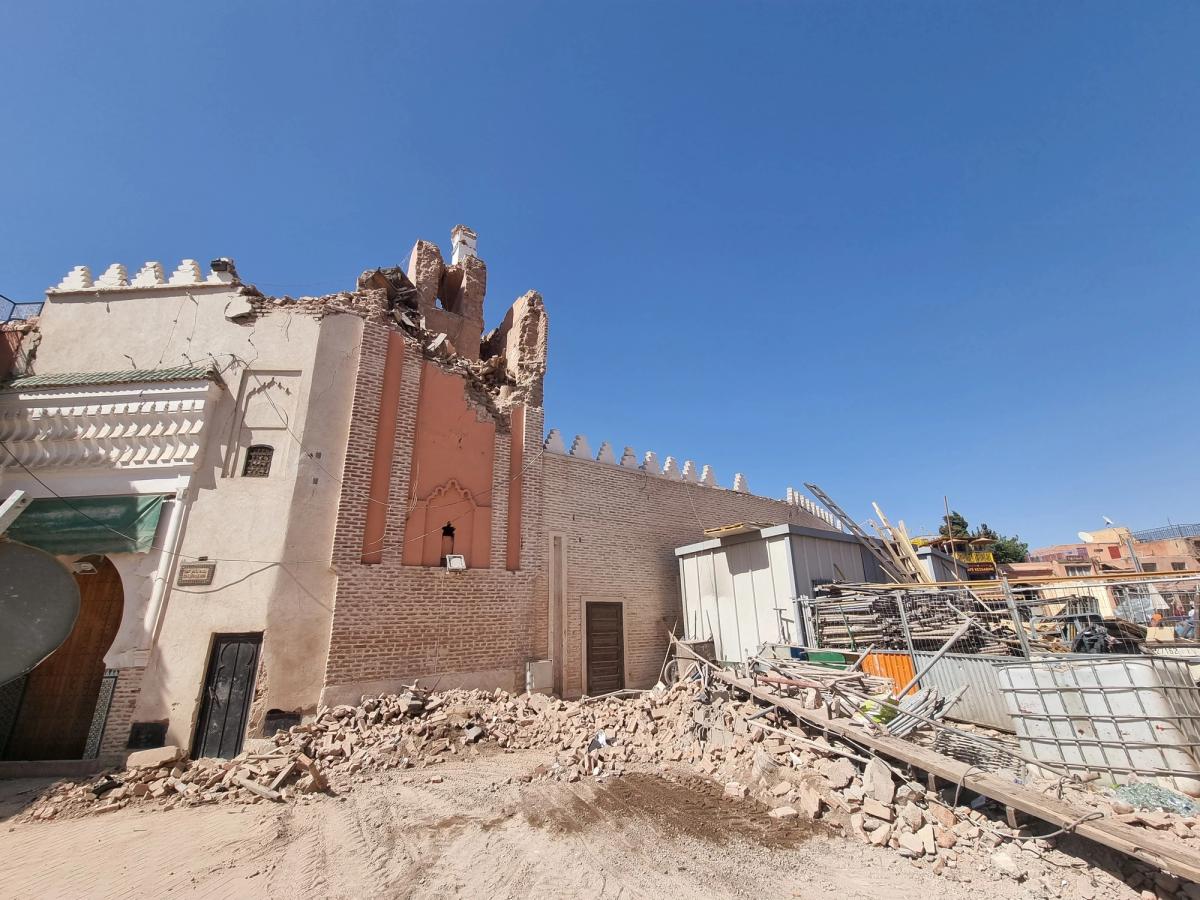Several Unesco World Heritage sites have been severely damaged by the recent earthquake in Morocco.
“After a disaster like this, the most important thing is to preserve human lives,” Eric Falt, the regional director of the Unesco Office for the Maghreb, said on Saturday. The death toll from the 6.8-magnitude earthquake that struck late Friday night has climbed to 2,122 with 2,421 people injured people, according to Moroccan state television.
But Falt stressed the importance of damage assessment and restoration of both tangible and intangible heritage, saying it is “necessary to immediately plan for the second phase, which will include the reconstruction of schools and cultural assets affected by the earthquake.”
One of these affected “cultural assets” is the medieval medina in Marrakech, which was inscribed by Unesco as a world heritage site in 1985 (in 2009, it was added to the organisation's Intangible Cultural Heritage list). Following a two-hour assessment tour on Saturday of the 700-hectare area, with its network of narrow alleyways, Falt said: “it can already be said that the damage is much more significant than expected.”
Founded in 1070–72 by the Almoravids—a Berber Muslim dynasty—Marrakech remains a place of important tangible and intangible heritage. It was a political, economic and cultural powerhouse for centuries, influencing the western Muslim world, from North Africa to Andalusia.
Its cultural treasures from the Almoravid period include the Koutoubia Mosque, the Kasbah—a walled complex that includes sites such as the royal palace—as well as battlements, monumental doors, and gardens. Later architectural jewels include the Bandiâ Palace, the Ben Youssef Madrasa (a school built in the 14th century), the Saadian Tombs, several grand residences and Place Jamaâ El Fna, the plaza where many sought refuge as the quake rocked the city on Friday.
According to Falt, the Koutoubia mosque's iconic minaret has suffered substantial cracks, while the minaret of the Kharbouch Mosque in Jemaa El Fnaa Square is almost completely destroyed and many sections of the city’s historic walls have collapsed. The worst hit area in the city is reportedly its ancient Jewish quarter—the Mellah—where historic homes have been badly damaged.
In a statement issued Saturday, Unesco director-general Audrey Azoulay expressed “solidarity with the Moroccan government and its people” and emphasised the importance of understanding the full extent of the catastrophe.
Speaking to The Art Newspaper, Falt said that credible reports indicate that the Tinmel mosque, located in the High Atlas Mountains, was also almost entirely destroyed. It is in the province of Al Haouz, where the epicentre of the earthquake was located and entire villages have been wiped out. The mosque, once a pilgrimage site, had been partly restored in the mid 20th century and again in the 1990s, and has been on Unesco's Tentative World Heritage list since 1995. Just seven months ago, a restoration project was initiated by the Ministry of Islamic Affairs that was to last 18 months and included plans for a new museum next to the site.
Falt added that Unesco hopes to soon send a team to assess the damage to the building. He also emphasised its importance, saying, “It’s a symbolic place in the history of Morocco because it was the starting point of the Almohad military campaigns against the Almoravid dynasty, at the beginning of the 12th century.” Almohad rulers were also buried in its vicinity and it was the site of the Almohads' last stand against the Marinids empire in 1275.
Its destruction, Falt said, “constitutes an inestimable loss for the national heritage of Morocco.”
In an interview with Morocco’s Medias24, the keeper of the site, Nadia El Bourakkadi said, “The mosque survived for centuries. It’s the will of God.”
According to Reuters, a Moroccan culture ministry source said "the ministry has decided to restore it and will make a budget for it", without giving details.
Meanwhile, Falt told The Art Newspaper that the Unesco-listed Ksar of Aït Ben Haddou, the fortified city on the old caravan route between the Sahara and Marrakech where parts of the 1962 film Lawrence of Arabia were shot, was also affected by the earthquake. “It is difficult to have a precise inventory [of the damage done],” he told The Art Newspaper. “But photos show damaged and cracked buildings. The collective granary which overlooks the ksar was reportedly seriously damaged.” The city is considered a prime example of Moroccan earthen clay architecture.
As the death toll climbs, so too will revelations of damaged heritage sites, as Morocco’s fragile patrimony—especially in less accessible rural areas—bears the brunt of the earthquake alongside the nation.


